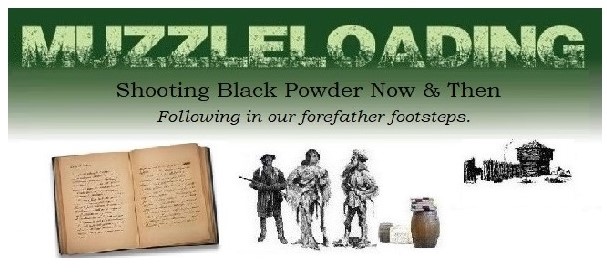WINTER HAS ALWAYS MADE
2 posters
Page 1 of 1
 WINTER HAS ALWAYS MADE
WINTER HAS ALWAYS MADE
WINTER HAS ALWAYS MADE
STAYING COMFORTABLE MORE FUN by: John Kramer
Plastic bags are guaranteed to freeze your feet. My feet have never been colder than when in synthetic rubber boots standing in a goose blind 30 some years ago with synthetic socks. If you trap the sweat, and your feet will sweat, you’ll soon freeze ‘em.I have never come closer to dying that when the best high-tech mountaineering gear I could buy 25 - 30 years ago failed me when I needed it most—it was one of the markers that led me to the old ways. I have never felt my life was at risk from equipment failure using the old ways: with old ways survival is simply up to me.
It’s a shame the rubber bottom - leather upper "pac" or Maine hunting shoe is too late for our period. They may the the best answer anyone ever devised. India rubber shoes were available and good examples can be seen at the Steamboat Arabia museum; they were stitched together like shoes but not that dissimilar from some of today’s slip-on overshoes.
Traditionalists must first consider the local climate; things are a little different in areas where it gets below freezing and stays there, and places where it meanders back and forth over that magic line. The former is easiest to deal with.
As in all winter wear the secret is in layering. Start with silk (the warmest for its weight) or cotton next to the skin. Add layers of cotton, linen, hemp, wool, and leather to meet all contingency. Feet need the same. If you don’t have silk and can stand wool next to your skin it is better than cotton which doesn’t wick moisture away from the skin as well as silk and wool. If you are sensitive to wool and don’ t have silk the cotton will work well enough.
If you are in an area where it is always frozen, wear most of your layering under a light inner moc which slides into a blanket boot and then into a heavy outer moc which always stays outside so it’s always frozen. There is really no weather too cold for this kind of rig, but, if worn where it always thawing and wet it will be heavy and cumbersome when soaked through.
For places like the Great State of Missouri (pronounced Misery) you need a fairly heavy leather moc with fabric layers within. The number of layers depends on how sensitive your feet are. Spare fabric layers (stockings and blanket boots) are a pleasure at night. If the moc leather is too thin it will stretch so much it may cause a tripping hazard. Plan on your feet being wet: it ain’t as nice as dry, but, with proper layering they’ll still be warm enough.
Greasing the leather helps. Be careful if you have a chrome tanned leather (i.e. Dyer’s) and use an animal grease like bear oil. The stitching will soon pull through as the leather deteriorates. If you buy neatsfoot oil be careful not to buy compounded neatsfoot oil (which is mostly what is sold): be sure to get pure neatsfoot oil. It makes a big difference.
Beeswax added to the neatsfoot oil helps keep the grease on the leather a little longer. Bring the oil to a temperature sufficient to melt wax of equal volume in a double boiler. Add more oil or wax if you want it thicker or thinner. For maximum penetration apply direct from the molten pot. Apply cold layers later to build the surface resistance. (See sidebar for a period recipe to waterproof leather boots). Or. . . I occasionally have a little WONDER BUTTER available for sale or trade.
Never do anything which offers to totally waterproof. If the outer surface is absolutely impermeable, your feet are going to get real cold. One cheap and, I feel authentic way, it was used at Valley Forge, is to wrap your feet in layers of burlap. It doesn’t wear well, requires fiddling with, but will keep your feet from freezing.
For a summer rendezvous, barefoot is absolutely correct. Squishy mud between your toes in spring is sort of a primeval ritual like pissing on the ground every day: it keeps your soul in contact with the earth. Think about that warm squshy mud between your toes when the temps are 10 below.
Not only keep your powder dry, but keep your feet warm.
Method of Making Leather Impervious to Water (1795)
The New England fisherman preserve their boots tight against water by the following method, which, it is said, has been in use among them above a hundred years: A pint of boiled linseed oil, half a pound of mutton suet, six ounces of clean beeswax, and four ounces of rosin are melted and mixed over a fire. Of this, while warm, not so hot as may burn the leather, with a brush, lay plentifully on new boots or shoes, when they are quite dry and clean. The leather is left pliant. Fishermen stand in their boots in wat hour after hour, without inconvenience. For three years past all my shoes, even of calf skin, have so been served, and have in no instance admitted water to pass through the leather. It is also a good salve - a Basilicon
Reference: The American Almanac for the year 1796 - Pr. Abraham Blaudelt - New Brunswick, N.J. 1795

STAYING COMFORTABLE MORE FUN by: John Kramer
Plastic bags are guaranteed to freeze your feet. My feet have never been colder than when in synthetic rubber boots standing in a goose blind 30 some years ago with synthetic socks. If you trap the sweat, and your feet will sweat, you’ll soon freeze ‘em.I have never come closer to dying that when the best high-tech mountaineering gear I could buy 25 - 30 years ago failed me when I needed it most—it was one of the markers that led me to the old ways. I have never felt my life was at risk from equipment failure using the old ways: with old ways survival is simply up to me.
It’s a shame the rubber bottom - leather upper "pac" or Maine hunting shoe is too late for our period. They may the the best answer anyone ever devised. India rubber shoes were available and good examples can be seen at the Steamboat Arabia museum; they were stitched together like shoes but not that dissimilar from some of today’s slip-on overshoes.
Traditionalists must first consider the local climate; things are a little different in areas where it gets below freezing and stays there, and places where it meanders back and forth over that magic line. The former is easiest to deal with.
As in all winter wear the secret is in layering. Start with silk (the warmest for its weight) or cotton next to the skin. Add layers of cotton, linen, hemp, wool, and leather to meet all contingency. Feet need the same. If you don’t have silk and can stand wool next to your skin it is better than cotton which doesn’t wick moisture away from the skin as well as silk and wool. If you are sensitive to wool and don’ t have silk the cotton will work well enough.
If you are in an area where it is always frozen, wear most of your layering under a light inner moc which slides into a blanket boot and then into a heavy outer moc which always stays outside so it’s always frozen. There is really no weather too cold for this kind of rig, but, if worn where it always thawing and wet it will be heavy and cumbersome when soaked through.
For places like the Great State of Missouri (pronounced Misery) you need a fairly heavy leather moc with fabric layers within. The number of layers depends on how sensitive your feet are. Spare fabric layers (stockings and blanket boots) are a pleasure at night. If the moc leather is too thin it will stretch so much it may cause a tripping hazard. Plan on your feet being wet: it ain’t as nice as dry, but, with proper layering they’ll still be warm enough.
Greasing the leather helps. Be careful if you have a chrome tanned leather (i.e. Dyer’s) and use an animal grease like bear oil. The stitching will soon pull through as the leather deteriorates. If you buy neatsfoot oil be careful not to buy compounded neatsfoot oil (which is mostly what is sold): be sure to get pure neatsfoot oil. It makes a big difference.
Beeswax added to the neatsfoot oil helps keep the grease on the leather a little longer. Bring the oil to a temperature sufficient to melt wax of equal volume in a double boiler. Add more oil or wax if you want it thicker or thinner. For maximum penetration apply direct from the molten pot. Apply cold layers later to build the surface resistance. (See sidebar for a period recipe to waterproof leather boots). Or. . . I occasionally have a little WONDER BUTTER available for sale or trade.
Never do anything which offers to totally waterproof. If the outer surface is absolutely impermeable, your feet are going to get real cold. One cheap and, I feel authentic way, it was used at Valley Forge, is to wrap your feet in layers of burlap. It doesn’t wear well, requires fiddling with, but will keep your feet from freezing.
For a summer rendezvous, barefoot is absolutely correct. Squishy mud between your toes in spring is sort of a primeval ritual like pissing on the ground every day: it keeps your soul in contact with the earth. Think about that warm squshy mud between your toes when the temps are 10 below.
Not only keep your powder dry, but keep your feet warm.
Method of Making Leather Impervious to Water (1795)
The New England fisherman preserve their boots tight against water by the following method, which, it is said, has been in use among them above a hundred years: A pint of boiled linseed oil, half a pound of mutton suet, six ounces of clean beeswax, and four ounces of rosin are melted and mixed over a fire. Of this, while warm, not so hot as may burn the leather, with a brush, lay plentifully on new boots or shoes, when they are quite dry and clean. The leather is left pliant. Fishermen stand in their boots in wat hour after hour, without inconvenience. For three years past all my shoes, even of calf skin, have so been served, and have in no instance admitted water to pass through the leather. It is also a good salve - a Basilicon
Reference: The American Almanac for the year 1796 - Pr. Abraham Blaudelt - New Brunswick, N.J. 1795

Last edited by Buck Conner on 5/5/2022, 5:28 pm; edited 1 time in total
 Re: WINTER HAS ALWAYS MADE
Re: WINTER HAS ALWAYS MADE
A little trick I learned during my surveyor days when standing behind a survey instrument for hours on end in sub freezing weather is to spray your feet with powdered antiperspirant before putting on your socks. My feet sweat something terrible, and my socks would be soaked by mid day, but once I started spraying my feet I was more comfortable during the day.
Fyrstyk- Posts : 29
Join date : 2021-07-01
Page 1 of 1
Permissions in this forum:
You cannot reply to topics in this forum








